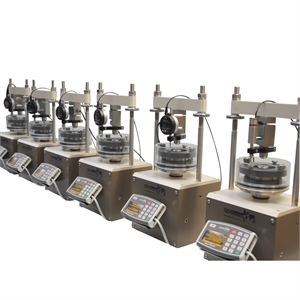In this month’s issue of theGeotechnica, Dr Sean Rees is writing the first in a series of articles. This month’s offering discuss the automation of oedometer testing and determination of the end of primary consolidation.

Recent years have brought us a wide range of testing apparatuses which allow computer control of test procedures, providing users with decreased operational complexity and increased reliability. Many of the current one-dimensional consolidation systems already do away with the need for bulky weights, replacing them with pneumatic, hydraulic or electro-mechanical systems for the application of vertical load during a test. One of the main advantages of oedometer automation is the possibility to run a series of tests more quickly than when manually driven by allowing the software to make decisions about end of loading increment timings. However, full automation of incremental loading and unloading for a complete oedometer testis still difficult to achieve in a reliable and sophisticated way, with automation being typically achieved through a combination of user-defined time limits and analysis of raw (or calculated) data.
Testing specimens from different soil types and geotechnical contexts implies variability in consolidation behaviour, which in turn means the same automation trigger may not be applicable for different specimens. This also unfortunately means most current automation methods offer no saving in the total oedometer test length. To address these issues GDS Instruments developed a data analysis methodology, independent of the magnitude of test parameters, which allows oedometer automation algorithms to adapt to specimen behaviour. The result of this was the creation of an Adaptive Oedometer Automation feature, which allows users to conduct oedometer tests significantly faster without compromising the quality of test data.
Download a copy of the article here.